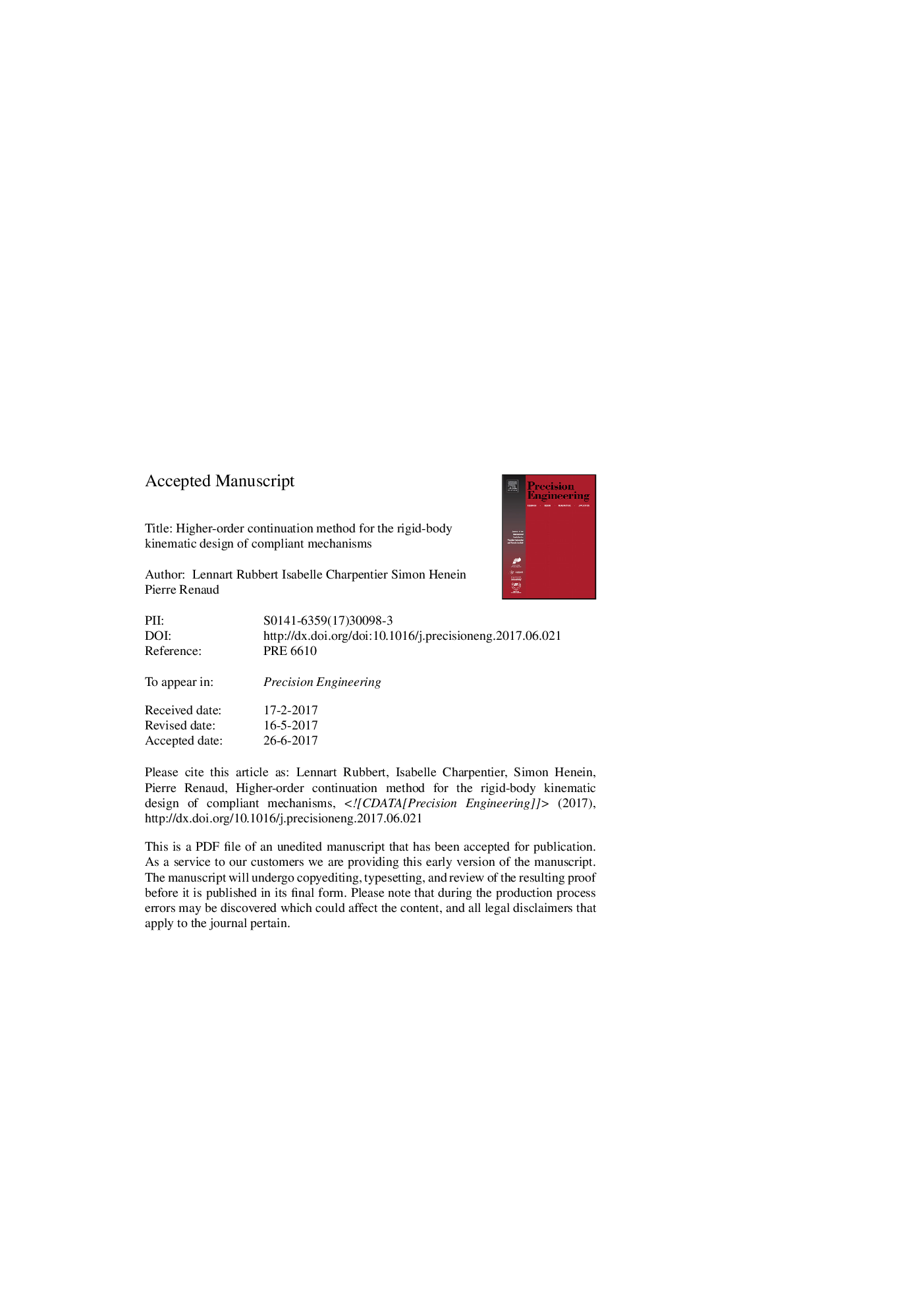| کد مقاله | کد نشریه | سال انتشار | مقاله انگلیسی | نسخه تمام متن |
|---|---|---|---|---|
| 5019066 | 1467838 | 2017 | 19 صفحه PDF | دانلود رایگان |
عنوان انگلیسی مقاله ISI
Higher-order continuation method for the rigid-body kinematic design of compliant mechanisms
ترجمه فارسی عنوان
روش تداوم مرتبه بالاتر برای طراحی سینماتیک سفت و سخت مکانیسم های سازگار
دانلود مقاله + سفارش ترجمه
دانلود مقاله ISI انگلیسی
رایگان برای ایرانیان
کلمات کلیدی
مکانیسم مطابقت، طراحی مکانیکی، روش ترمیم مرتبه بالاتر، نمودار بیوگرافی، مکانیسم 3-آمریکا تکینگی، تجزیه و تحلیل فضای کاری،
موضوعات مرتبط
مهندسی و علوم پایه
سایر رشته های مهندسی
مهندسی صنعتی و تولید
چکیده انگلیسی
Compliant mechanisms are of great interest in precision engineering. In this paper, we propose a higher-order continuation method to help their rigid-body kinematic design. The method helps to investigate the choice of a mechanism configuration through the whole exploration of the workspace, and eases the kinematic analysis to avoid, or take advantage of, the vicinity of kinematic singularities. Such approach is relevant for planar and quasi-planar mechanisms that can be obtained with micro-manufacturing processes adapted to precision applications. The higher-order continuation method allows for a direct and accurate plotting of the input-output relationship of any mechanism by considering only its geometrical closed-loop equations, i.e. without the complex derivation of any analytical model. We show that these plots, called bifurcation diagrams, reveal essential information such as the joint velocity profile and the presence of singular configurations. Moreover, the continuous and accurate computation of the mechanism configuration in the vicinity of singularities provides detailed information about the kinematic behavior of the mechanism in its extreme positions. For the design of compliant mechanisms, the designer can advantageously use the bifurcation diagrams to evaluate the relevance of the selected mechanism, then to identify a configuration in order to obtain desired kinematic properties without the derivation of the inverse kinematic model (IKM) or the direct kinematic model (DKM). The method is exemplified with a 3 universal-joint and 3 spherical-joint mechanism (3-US), the IKM and DKM of which cannot be derived analytically. The latter has a large workspace and special kinematic behaviors consisting of a screw-like motion and a platform gyration, which have not been studied before and could lead to novel compliant devices.
ناشر
Database: Elsevier - ScienceDirect (ساینس دایرکت)
Journal: Precision Engineering - Volume 50, October 2017, Pages 455-466
Journal: Precision Engineering - Volume 50, October 2017, Pages 455-466
نویسندگان
Lennart Rubbert, Isabelle Charpentier, Simon Henein, Pierre Renaud,
